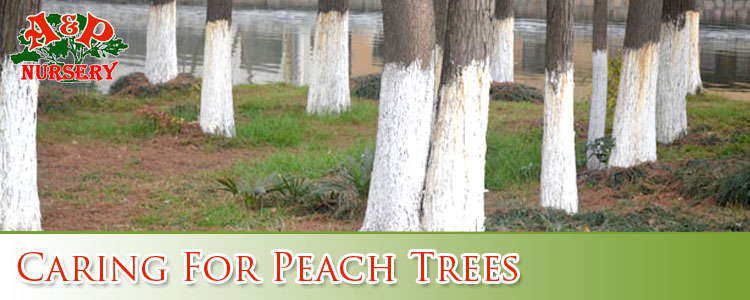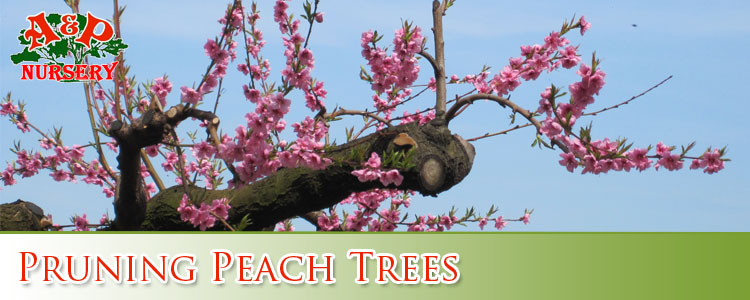
Having fresh peaches from your own backyard is a delicious way to save on your yearly grocery bill. They are great fresh and can be dried and canned. Even jams made with peaches can be a great way to make the most of growing peaches in Arizona.
When to fertilize peach trees
You should never plant your peach trees in low areas that are known to be frost pockets. If you are wanting to delay your blooms in areas that have frequent spring frosts, then you should plant on the north side of a building. The building will be able to shade the tree in late winter, which delays the bloom, but allows the tree to get the needed sunlight of summer. Peaches tend to do quite well in sandy, well-drained soils. You should plant the trees in the spring so that it will be well established by winter. Be sure that you are spacing your trees 15-20 feet apart.

Fertilizing the peach tree
You should fertilize your young trees with a fertilizer that contains nitrogen like a pound of 10-10-10 or an equivalent after it has been planted for 6 weeks. During the second year, you should add three-quarters of a pound of fertilizer in spring and then the same amount during summer. Seeding your lawn around the tree with grass and white clover or with crimson clover or bird’s foot trefoil will give your tree extra nitrogen. Trefoil and clover are nitrogen fixing legumes. Once your tree begins to bear fruit, it won’t grow as fast and won’t need a lot of nitrogen. During the third year and up, you will need only a pound of nitrogen yearly, and it should be applied during spring when the growth is starting. Slowing the growth of a tree is a great way to ensure that it will be stronger, hardier in the winter, and live longer. Don’t apply any fertilizer within 2 months of the first fall frost and let your lawn grow up around the tree in late summer/early fall. Be sure that you don’t apply a lot of water during this time and don’t prune your tree in the fall.
Caring for your peach tree

In order to keep your tree from getting winter sun-scald, you may paint the tree trunk white. Be sure to remove the old mulch from the base in order to avoid it attracting any type of rodents and then be sure to place mouse guards around the trunk as needed. During late winter and early spring, once the ground finally has been thawed, you should place heavy layers of mulch around your tree to ensure that the soil remains cool which in turn delays blooming.
Pruning Peach Trees

You can train peaches to open in the center and then prune them annually. Be sure that you remove the diseased or dead wood first, then prune the branches that are drooping down or growing straight up. Nectarines and peaches will only bear fruit from lateral buds on year old branches. They will need to be pruned yearly during dormant season to stimulate fruit wood growth and to keep the fruit bearing branches closer to the trunk. Whenever the bloom is heavy, you should lightly head back the longer fruit bearing branches in order to reduce fruit load and prevent breaking branches. The summer pinching will help to control your tree size, which encourages the formation of the next year buds and will improve the quality of fruit. Whenever the tree is around 5-6 years old, remove the wood that has been produced in the last 2 years. This will keep your tree from getting too tall and will restore growth to older wood.
IN about 4-6 weeks after the bloom, you should thin out some of the excess fruit if you have a lot of peaches. Remove and then destroy the fruit that has signs of insect punctures. Thin the fruit so that they are spaced between 6-8 inches apart on the branch. The left over fruit will be sweeter and larger than they would have been without thinning the fruit.
Harvesting and then storing peaches

You should never shortchange yourself by picking the peaches way too early. The reward for all your hard work is special, home grown flavors of a tree ripened fruit and not one that has to sit on your kitchen windowsill. If there is a bit of green on your peach, then it isn’t ready to be picked. A peach should easily come off the branch with just a slight twist and nothing harder than that. Be careful while you are harvesting because many types of varieties such as the Champion and Reliance are soft fleshed and will bruise quite easily when they are ripe. In order to store your peaches, be sure that they are in a cool, dry place to prevent them from ripening further.
Peach Trees For Sale in East Phoenix Valley
If you want to get the most out of your peach tree, or are thinking about planting your own peach tree A&P Nursery has you covered from start, to fertilizer, and to harvest. We can help you choose the right tree for your landscape, get you the tools you need, and help you with tips on how to get the most out of your gardening. Call or come by one of our nurseries today.
A & P Nursery
40370 N. Gantzel Rd.
Queen Creek, AZ 85240
480-655-5789
A & P Nursery
2645 W. Baseline Rd.
Mesa, Arizona 85202
480-839-5362
A & P Nursery
6129 E. Brown Rd.
Mesa, Arizona 85205
480-396-8800
A & P Nursery &
Lawnmower Shop
2601 E. Baseline Rd.
Gilbert, Arizona 85234
480-892-7939